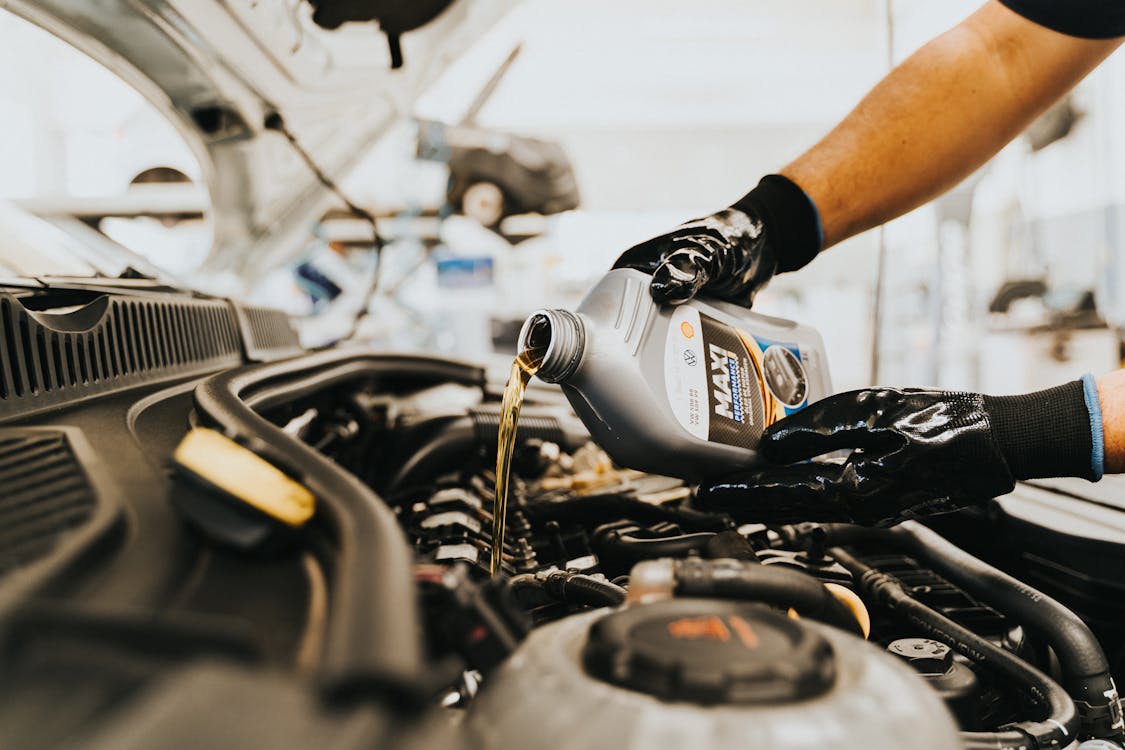Ever stood in the auto parts store, staring at rows of motor oil bottles, feeling like you’re trying to crack some secret code? You’re not alone! Did you know that 68% of car owners admit to being confused by oil viscosity ratings? Well, buckle up, because we’re about to take a thrilling ride through the world of oil viscosity! In this guide, we’ll demystify those cryptic numbers and letters, empowering you to make the best choice for your beloved vehicle. Let’s dive in and get our hands dirty with some oily knowledge!
What is Oil Viscosity and Why Does it Matter?
Alright, folks, let’s talk about oil viscosity. It’s like the personality of your engine oil – how thick or thin it is, and how it flows. I remember the first time I heard about viscosity, I was like, “Vis-what-now?” But trust me, it’s not rocket science!
So, picture this: you’re pouring maple syrup and water side by side. The syrup moves slower, right? That’s because it has a higher viscosity. Now, imagine that in your engine. Oil with higher viscosity is thicker and moves slower, while lower viscosity oil is thinner and zips around faster.
Why does this matter? Well, let me tell you about the time I used the wrong viscosity in my old beater car. It was like trying to run through a pool of molasses! The engine struggled, fuel efficiency tanked, and I swear I could hear my car groan every time I turned the key.
Viscosity is crucial for engine protection and fuel efficiency. It’s all about that Goldilocks zone – not too thick, not too thin, but juuust right. The right viscosity creates a protective film between moving parts, reducing friction and wear. It’s like giving your engine a cozy, protective blanket!
But here’s the kicker – temperature plays a huge role in viscosity. Oil thins out when it’s hot and thickens when it’s cold. That’s why we need different viscosities for different climates. I learned this the hard way when I moved from sunny California to chilly Minnesota. My poor car wasn’t happy until I switched to the right viscosity for the weather!
Decoding the Numbers: Oil Viscosity Explained
Okay, let’s crack this code together! Those numbers on the oil bottle aren’t just there to confuse us (though sometimes it feels that way). They’re part of the SAE viscosity rating system. SAE stands for Society of Automotive Engineers, by the way. Fancy, huh?
Let’s take a common oil like 5W-30. It looks like a math problem, doesn’t it? But I promise it’s not as complicated as high school algebra! The “W” stands for winter, not weight like I thought for years. Face-palm moment right there!
The first number, like the 5 in 5W-30, is all about cold weather performance. It tells you how the oil flows when it’s cold, like when you’re starting your car on a frosty morning. The lower this number, the better it flows in cold temps. I once used a 10W oil in the dead of winter, and my car sounded like an old man getting out of bed!
Now, the second number, like the 30 in 5W-30, is the oil’s viscosity at normal operating temperature. It’s how thick the oil is when your engine’s all warmed up and purring. Higher numbers mean thicker oil at high temps.
These multi-grade oils are pretty nifty. They act like thin oils in cold weather for easy starting, then thicken up when the engine’s hot to protect all those moving parts. It’s like having a jacket that’s light in the morning but gets warmer as the day heats up. Pretty cool, right?
Understanding Oil Viscosity Ratings in Different Climates
Let me tell ya, climate is a big deal when it comes to oil viscosity. I learned this the hard way when I moved from Arizona to Alaska for a job. Talk about a climate shock!
In cold weather, you want an oil that’s not gonna turn into a popsicle when the temperature drops. That’s where those lower “W” numbers come in handy. A 0W or 5W oil is gonna flow much better in cold starts than a 10W or 15W. Trust me, your engine will thank you on those frosty mornings!
I remember my first Alaskan winter. I hadn’t changed my oil from the stuff I used in Arizona, and my poor car sounded like it was trying to start underwater. Not a good way to wake up the neighbors at 6 AM!
Now, for those of you lucky ducks in warmer climates, you’ve got different concerns. Hot weather can make oil thin out faster than ice cream on a summer sidewalk. That’s where the second number in the viscosity rating comes into play. Higher numbers like 30 or 40 will provide better protection in high heat.
And don’t even get me started on high-performance engines! These bad boys generate a ton of heat and need oils that can stand up to the pressure. That’s why you’ll often see racing oils with higher viscosity ratings.
The key takeaway? Match your oil to your climate and driving conditions. It’s like dressing for the weather – you wouldn’t wear a parka in Miami or flip-flops in Alaska, right?
Choosing the Right Oil Viscosity for Your Vehicle
Alright, folks, let’s talk about picking the perfect oil viscosity for your ride. It’s not just about grabbing whatever’s on sale (learned that lesson the hard way). There’s a bit of science and a lot of common sense involved.
First things first, check your owner’s manual. I know, I know, reading manuals is about as fun as watching paint dry. But trust me, the folks who built your car know what they’re talking about. They’ve done all the fancy testing to figure out what oil works best for your specific engine.
I remember when I first got my hands on a classic muscle car. I thought, “Hey, thicker oil means better protection, right?” Wrong! I slapped in some super thick oil, thinking I was being clever. Let’s just say the engine wasn’t impressed. It chugged and spluttered like it had a bad case of the hiccups.
Here’s the deal: using the wrong viscosity can mess up your engine big time. Too thick, and your engine works overtime just to pump the oil around. Too thin, and you might as well be running on water. Neither scenario is good for your wallet or your car’s lifespan.
Consider your driving habits too. If you’re like me and can’t resist gunning it at every green light, you might need a slightly different viscosity than someone who drives like they’re perpetually stuck behind a parade.
Common Myths and Misconceptions About Oil Viscosity
Oh boy, let me tell you, there are more myths about oil viscosity than there are fish stories at a angler’s convention! Let’s bust some of these wide open, shall we?
First up, the biggie: “Thicker oil is always better.” Nope, nada, no way! I fell for this one hook, line, and sinker when I was younger. Slapped some super thick oil in my first car, thinking I was giving it some kind of magical protection. Spoiler alert: I wasn’t. The engine struggled like it was trying to run through molasses. Thicker isn’t always better, folks!
Then there’s the old “I’ll just use the same oil year-round” myth. I used to be guilty of this one too. But let me tell ya, oil that works great in the dog days of summer might turn into sludge when winter rolls around. Your car needs different viscosities for different seasons, just like you need different clothes!
Oh, and here’s a classic: “Synthetic oil will leak in older engines.” I heard this one from my Uncle Joe, who swore up and down that synthetic oil was the devil’s brew. Turns out, Uncle Joe was about as right as a screen door on a submarine. Synthetic oil actually flows better and can help reduce leaks in older engines.
Now, let’s talk about the relationship between viscosity and oil changes. Some folks think that higher viscosity oil means you can go longer between changes. I wish! But nope, viscosity doesn’t affect how long the oil lasts. It’s like thinking that wearing a thicker coat means you don’t need to wash it as often. Nice try, but no cigar!
And there you have it, folks! We’ve successfully cracked the code of oil viscosity. Armed with this knowledge, you’re now ready to face those intimidating rows of motor oil bottles with confidence. Remember, choosing the right oil viscosity is crucial for keeping your engine purring like a contented kitten. It’s not just about picking a random number – it’s about understanding your car’s needs, your driving habits, and the climate you’re in.
Don’t be afraid to experiment a little (within reason, of course) to find what works best for your vehicle. Maybe keep a little logbook of how your car performs with different viscosities. And hey, if you’ve got any cool tips or experiences with oil viscosity, why not share them in the comments? We’re all in this oily adventure together!
Just remember, when in doubt, always consult your owner’s manual or a trusted mechanic. They’re like the wise elders of the automotive world. And who knows? Maybe next time you’re at a party, you can impress everyone with your newfound oil viscosity knowledge. It’s sure to be a conversation starter… or ender, depending on your crowd!
So, the next time someone asks you about those mysterious numbers on the oil bottle, you can smile and say, “Oh, that? That’s just the oil viscosity explained!” Now, go forth and lubricate wisely!



